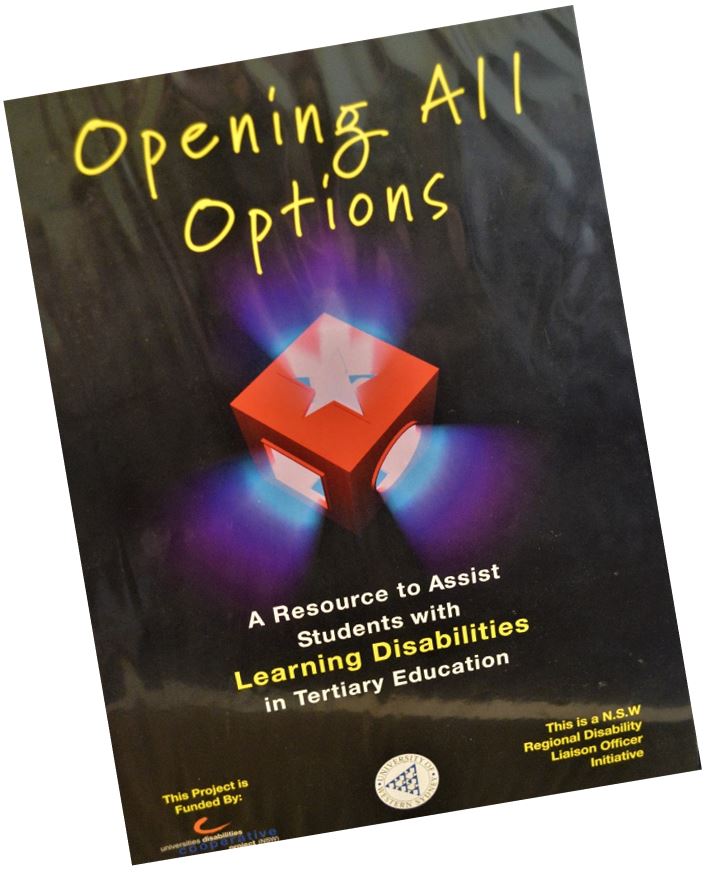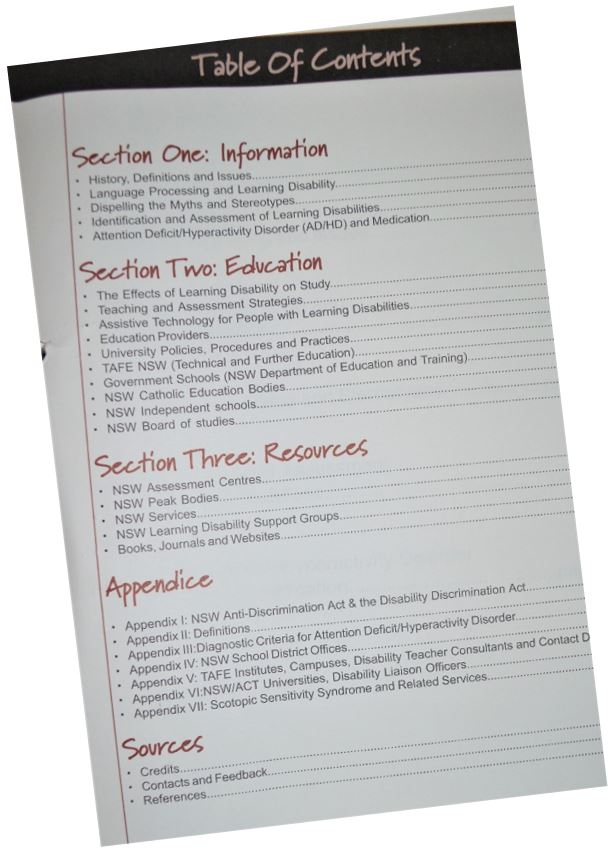Dyslexia Awareness Month and Opening All Options
Part 1. Background and history of Opening All Options.
Written by Trevor Allan
October is Dyslexia Awareness Month. It is also the 20th Anniversary of the launch of the first Opening All Options Learning Disability Resource. So I thought it would be opportune to prepare a series of articles to celebrate Dyslexia Awareness Month through the medium of Opening All Options.
Over the intervening 20 years, Opening All Options has been revised and updated several times, keeping pace with the developments and changes in the education systems, technology and strategies for managing the impact of Learning Disabilities (LD).
This first article will look at some of the history and background of Learning Disabilities in Australian education, and the role of Opening All Options in changing the environment for people with Learning Disabilities in education in Australia.
Subsequent articles will focus on a number of features of Opening All Options to highlight the valuable resources available in this important document.
As I wrote in response to the latest update – “This latest update of Opening All Options is a worthy addition to the history of this resource. Julie Fry and Joanne Webber have done a great job in updating the resource to include developments in teaching and learning (with particular emphasis on universal design), technology changes, the latest research and updated information. These updates will ensure it remains a relevant and valuable resource for Disability Practitioners, Academics, people with Learning Disabilities and their families.”
History

Cover of the original Opening All Options,
first published in 1999
The original Opening All Options was a project of the NSW Regional Disability Liaison Officers (RDLOs) who were forerunners of the NDCOs. Working across schools, TAFEs, universities and the wider community, the New South Wales RDLOs identified a serious lack of information and resources around Learning Disabilities as well as distinct differences in the understanding, treatment and strategies across and within different education sectors. In those days, the school education sector not only did not recognise Learning Disabilities, but were vehemently opposed to anything that provided any validity, acknowledgement or credibility to Learning Disabilities. There were also many variations in services and strategies provided within both the TAFE and University sectors. We felt that what was needed was a comprehensive resource to provide information to practitioners, people with Learning Disabilities, their families and educators.
We developed a project outline, submitted a funding proposal to the NSW Universities Disabilities Cooperative Project and embarked on a two-year journey of research, writing, refining, negotiating, testing and designing the first Opening All Options. It was not an easy journey, because we were breaking new ground and the opposition to the Learning Disabilities model was particularly strong in the school education sector which subscribed to the learning difficulties model. There were several rather heated and at times vitriolic meetings with some senior people in the New South Wales Department of School Education, even including threats to block publication and have our funding cut. We persisted and succeeded in publishing the first Opening All Options in October, 1999 in both print and web versions.
One positive effect of this opposition was to make it even more important that everything we included in the resource was research-based, clinically and educationally valid and thoroughly tested with experts and practitioners. We were absolutely rigorous in ensuring that we got it right first time.
While mainly focussed on New South Wales, Opening All Options was groundbreaking for its time. The Project Team of NSW RDLOs was led by Anna Mungovan, and consisted of Hazel England and myself, very ably supported by our Project Officer, Julie Hollitt a Registered Psychologist. Two years of intensive writing, testing and refining the project produced a very comprehensive resource that covered a broad range of topics based on substantial research and analysis, giving it a credibility, legitimacy and relevance that facilitated its success and longevity. The fact that Opening All Options is still going and still relevant 20 years later is a testament to the validity of the original concept and the quality of its execution.
The Resource consisted of three main sections:
Section One: Information
- History, Definitions and Issues
- Language Processing and Learning Disabilities
- Dispelling the Myths and Stereotypes
- Identification and Assessment of Learning Disabilities
- Attention Deficit/Hyperactivity Disorder (ADD/HD) and Medication
Section Two: Education
- The Effects of Learning Disability on Study
- Teaching and Assessment Strategies
- Assistive Technology for People with Learning Disabilities
- Education Providers
- University Policies, Procedures and Practices
- TAFE NSW (Technical and Further Education)
- Government Schools (NSW Department of Education and Training)
- NSW Catholic Education Bodies
- NSW Independent Schools
- NSW Board of Studies
Section Three: Resources
- NSW Assessment Centres
- NSW Peak Bodies
- NSW Services
- NSW Learning Disability Support Groups
- Books, Journals and Websites
The next section was detailed Appendices, looking at legislation, definitions, diagnostic criteria for ADD/HD, contact details for schools, TAFES and universities and Scotopic Sensitivity and Related Services.
The final section was Sources, including Credits, Contacts and Feedback and four pages of detailed References.

As you can see, it was very comprehensive, and for the first time, this information, national and international research, policies and practices, resources and advice were brought together in an accessible and academically rigorous resource.
The impact was profound, with increased understanding and information bringing a more consistent approach to the provision of access and adjustments for students with LD across universities and TAFES, along with a more rigorous process of diagnosing and validating the nature of each individual’s LD characteristics and establishing the credibility and legitimacy of adjusting for the effects of LD. However, the biggest impact was in the School Education sector, which had previously rejected the existence of LD, preferring to follow the learning difficulties model, which saw any learning difficulties as the product of intellectual capacity, student application and motivation, teaching quality or student dedication. Over the ensuing years, that attitude and the policies and practices of the various State School Education systems have changed to the point where LD is now accepted and adjusted for across the country, much to the benefit of students with LD.
In the interests of future proofing the resource, it was handed over to the newly formed Australian Learning Disabilities Association to host and provide maintenance and updates for the future. There have been several updates since and the resource has now moved into ADCET. The first update converted Opening All Options into a National resource and subsequent updates have ensured that the information and resources provided have remained current and relevant.
Like any proud parent, it has been a fascinating exercise to watch our baby grow, mature and prosper, becoming the mature 20 year old it is now. From the feedback I have received over the years, and from my own practice and that of my staff and colleagues, I know that it has changed many lives for the better, as well as having a positive impact on the provision of appropriate access and adjustments to educational opportunities for people with LD. It was a tough job to make it happen in the first instance, but the results have been well worth the effort.
My next article will look at the section of the current Opening All Options that focuses on Disability Practitioners.
Part 2. For Disability Practitioners
September 2019

